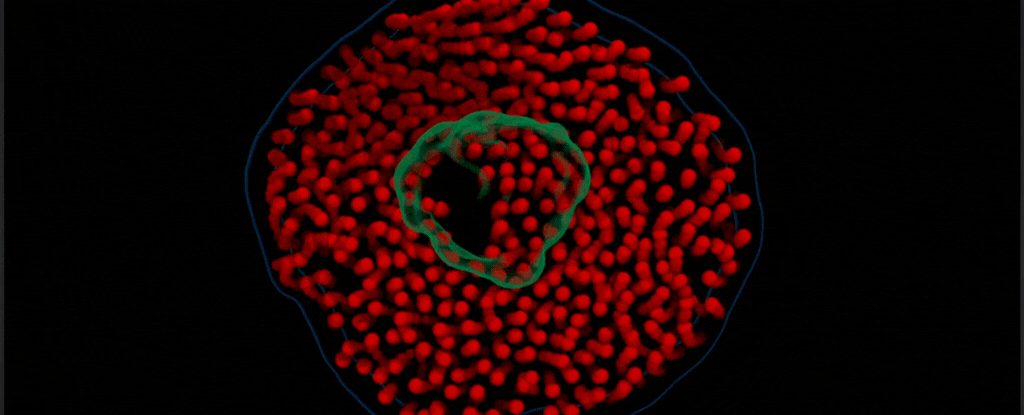Our bodies are alive with activity and packed with proteins jammed into fatty membranes or floating in and out of watery cells. Scientists have now, for the first time, captured the dance between the two: a liquid tango featuring proteins and fats as they would normally move in cells.
“We are going beyond taking single snapshots, which give structure but not dynamics, to continually recording the molecules in water, their native state,” says Qian Chen, a materials scientist and engineer at the University of Illinois Urbana-Champaign (UIUC), who led the team and describes their work as ‘film-making’.
“We can really see how proteins change their configuration and, in this case, how the whole protein-lipid self-assembled structure fluctuates over time.”
By tweaking a widely used imaging technique called transmission electron microscopy, Chen’s team captured the lively choreography of membrane protein ‘nanodiscs’ in liquid. These nanodiscs consist of proteins embedded in a lipid bilayer that resembles the cellular membranes in which they are usually found.
The team has dubbed their method ‘electron videography’, and validated the video data by comparing it to atom-level computer models of how molecules should move based on the laws of physics.
It was thought that the movement of membrane-bound proteins was fairly limited, given how lipids hold them in place. However, the researchers saw interactions between proteins and lipids happening over much larger distances than previously thought possible.
Membrane proteins are the cell’s gatekeepers, sensors and signal receivers, so the technique could lead to huge advances in our understanding of how they work.
With existing techniques, proteins are usually snap-frozen or crystalized so they don’t move and blur an image, or get damaged by the X-rays or electron beams used to image them. This gives a lifeless picture of a static protein that normally folds and bends, leaving scientists to infer how it interacts with other molecules based on its structure.
Alternatively, some imaging techniques use a fluorescent molecular tag to track molecules as they move, rather than watching the protein directly.
In this case, the researchers caged a droplet of water inside two thin sheets of graphene to protect it from the vacuum of the electron microscope. Suspended in the water droplet were nanodiscs of unlabeled proteins and lipids, which the team saw ‘dancing’ together like in their natural aqueous environment.
frameborder=”0″ allow=”accelerometer; autoplay; clipboard-write; encrypted-media; gyroscope; picture-in-picture; web-share” referrerpolicy=”strict-origin-when-cross-origin” allowfullscreen>
Materials scientists have been trying for at least a decade to film the activity of biological molecules in liquids, but they couldn’t clearly observe continuous protein dynamics.
With some careful tweaks to the approach, Chen and colleagues imaged their protein-lipid assemblies in real-time and for minutes, not microseconds. Importantly, they slowed the rate of electrons penetrating the sample and worked on the graphene scaffold, to successfully film the protein-lipid complex in action.
“Currently, this is really the only experimental way to film this kind of motion over time,” says UIUC materials engineering graduate student John Smith, first author of the paper.
“Life is in liquid, and it’s in motion. We’re trying to get to the finest details of that connection in an experimental way.”
As for other efforts, improved imaging techniques are revealing incredible details about all sorts of microscopic happenings – from watching how a virus’ outer coat takes shape to capturing the instant proteins collapse into clumps in diseases like Alzheimer’s.
Add artificial intelligence into the mix, to predict the 3D shape of nearly every protein known to science, and it certainly seems like a new era of biological research has been unlocked.
The research has been published in Science Advances.

Dr. Sarah Adams is a scientist and science communicator who makes complex topics accessible to all. Her articles explore breakthroughs in various scientific disciplines, from space exploration to cutting-edge research.







